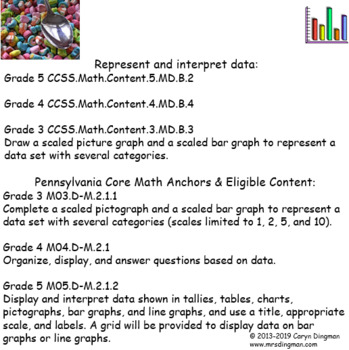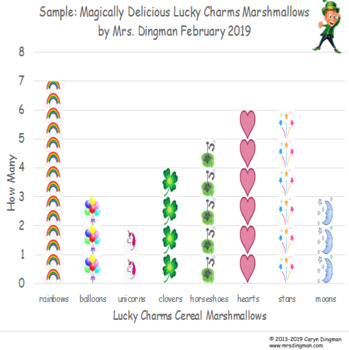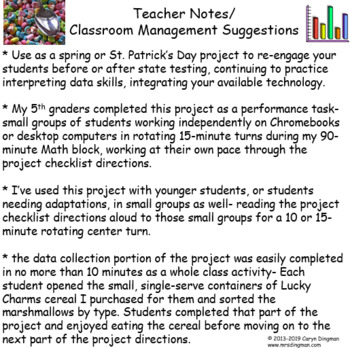Excel Graphing Lucky Charms Marshmallows
- PDF
- Excel Spreadsheets
Description
Give your students a real-world chance to compare Lucky Charms cereal marshmallow data in a way that's personal and unique!
This Lucky Charms Marshmallows Excel Project can be an engaging way to:
* integrate technology
* introduce, extend, or enrich a math topic of study
* introduce or give students additional practice creating sheets and charts using Excel
The classroom-tested product file includes:
* student project directions sheet, in checklist form
* rubric to score each completed graph
* sample bulletin board display poster
* Teacher Notes to share my classroom management experiences with you
* I’ve used this Lucky Charms Marshmallows Excel project:
- as a spring or St. Patrick's Day project, re-engaging students before or after state testing
- as an introduction or continued practice using Excel sheets and charts
* the Lucky Charms marshmallow clipart images searched and selected by students made each graph personal and unique
* my students were able to complete this project with two or three 15-minute small group center sessions
* My 5th graders completed this project as a performance task- small groups of students working independently on Chromebooks or desktop computers in rotating 15-minute turns during my 90-minute Math block, working at their own pace through the project checklist directions
* I’ve used this project with younger students, or students needing adaptations, in small groups as well- reading the project checklist directions aloud to those small groups for a 10 or 15-minute rotating center turn





